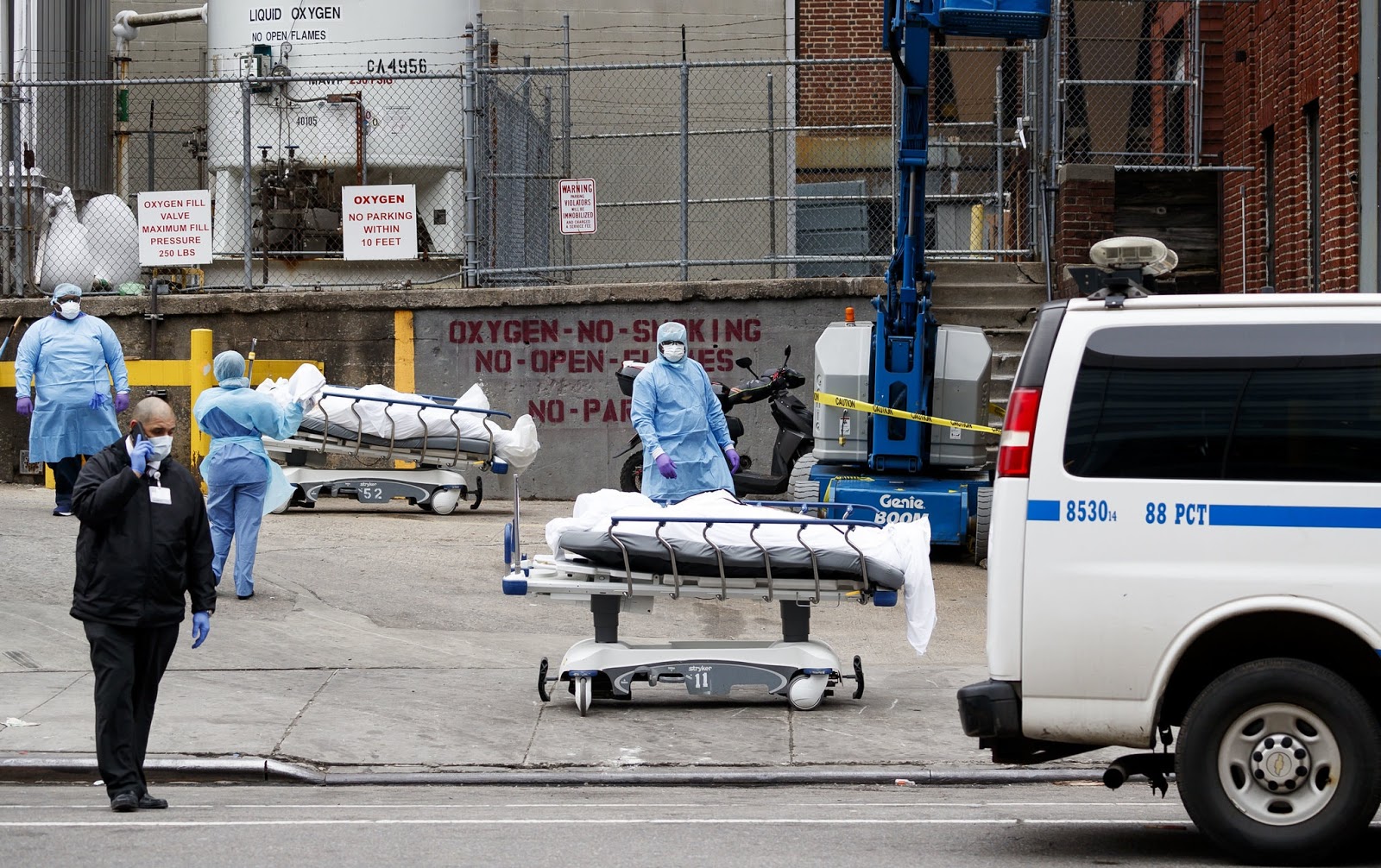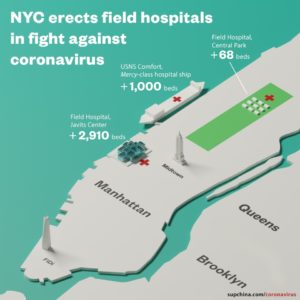Why you shouldn’t believe the 3.4% coronavirus death rate | The China Project COVID-19 Updates for March 31, 2020

Credit…Justin Lane/EPA, via Shutterstock
Hi readers,
The subject of today’s email is statistics. We’ve all been reading and thinking about statistics more than most of us have since high school. Numbers such as case count, level of contagion (“R0 factor”), and fatality rate have kept us up at night.
Most of the numbers we read in the newspapers are accurate to the extent that they’re the “official” numbers, but they’re full of statistical landmines that basically mean we only know what we know, but we don’t know what we don’t know.
This is particularly important as the Trump administration starts to narrow in on some specific numerical predictions for the pandemic. Today, Dr. Fauci predicted that 100,000-240,000 people are likely to die, calling this “our real number.” It’s a grim number and almost impossible to believe, but it’s also a lot better than the 2.2 million deaths in the U.S. we were hearing about just 2 weeks ago.
So what numbers can we count on? Is Fauci’s “real” number, a real number?
In speaking with a government agency employee who is on the team responsible for the mathematical modeling that New York State is using to forecast the outbreak, I was told,
“The case count means nothing — there is a vast population that has had SARS-COV-2 (the virus that causes COVID-19) that we won’t know about until one day when this is all over and we can go back and do antibody testing on the entire U.S. population at random. Right now, the only numbers to watch are the number of people hospitalized by the disease, the number of those people who get moved to intensive care, and the number of those people who die.
These are the numbers that affect any one individual’s chance of surviving, because if you get sick, and then you get very sick, and then there are no ventilators available, that’s when you have a real problem.”
I thought it’d be worth unpacking her statements in tonight’s email.
Before jumping into it — don’t forget to donate or forward to a friend our ongoing frontline medical workers protective equipment fundraiser.
We’re past 50% of our goal, but we need your help to get all the way there. The first boxes of N95 masks actually already arrived, and we’ll be delivering them to two NYC hospitals tomorrow. Tune in again tomorrow for photos.
– Bob Guterma
The China Project COO
The number of COVID cases is totally wrong
There is a huge amount of attention being paid in the mainstream media to the number of reported cases of COVID-19. It is the focal point of most news headlines, and data-focused tools put the visual focus on the case count. The problem is that the case count is totally wrong.
The reason why it is wrong is because most people with COVID-19 show mild or even no symptoms, never get tested, never enter a hospital or doctor’s office, and therefore never end up in an official count of COVID-19 cases.
According to the U.S. government-set standards for who should and should not get tested, only a small percentage of actual COVID-19 cases will ever be tested and formally identified.
In the world of statistical mathematics, this situation is a classical example of “selection bias,” whereby the source of the data is pre-selected in a way that skews the data. It’d be like asking drunk kids at a college party whether they want pizza or salads and using their answer as an indication of what all people everywhere like better. (Actually, in this case you’d probably get the same result no matter how many people you ask, but you get the point.)
The only people taking COVID-19 tests are people with a significantly high chance of having COVID-19, thus skewing the numbers higher. The only way to get a clear and accurate count of COVID-19 cases will be to test the entire population at random. In the U.S., that would mean testing people at random in all 50 states, in cities and rural areas, whether they are sick or healthy, and whether they have any reason to believe they have — or at any point have had — COVID-19 or not.
+ Up to 25% of infected people might show no symptoms at all.
+ This long but worthwhile article dives deep on selection bias in COVID-19 testing.
+ So does this WSJ op-ed from a week ago.
+ The President of Turkmenistan banned the word “coronavirus.” The country now has no cases. How about that for statistics?
It’s the antibodies, man
But wait: If you want to know how many people have had COVID-19, you actually cannot test only for COVID-19.
If someone had COVID-19 a month ago, showed no symptoms, and then got better — they would test negative now and never enter the official case count. To identify all people who currently have or have in the past had COVID-19, you need to do antibody testing, which tests whether an individual’s immune system has developed the antibodies that fought off the original infection. Only then can we identify the true prevalence of COVID-19.
Fortunately, today the FDA approved an antibody test that will be able to test for current AND past (i.e. recovered) cases of COVID-19. This is a game-changer, and provided the test proves effective in the field, it will allow governments around the world to get a clear and accurate measurement of COVID-19 prevalence in their populations.
The things we can count
In the thick of the crisis, the case count doesn’t matter. The only thing that government decision makers need to do is ensure that there are enough of two things: hospital beds for those who need to be hospitalized and ventilators for those who need intensive care.
This is why New York has established thousands of new beds and intensive care units at field hospitals in the Javits Convention Center, Central Park, and Pier 90, where the U.S. navy hospital ship USNS Comfort docked yesterday, and why governors and mayors across the country are worried about ensuring their own capacity without enough help from Washington.
+ Sadly, there is one other thing government officials need to ensure, and that is morgue and cemetery space. The photos from New York are starting to look eerily similar to those out of Italy just a week ago.
Business as usual
- 9 charts showing what coronavirus is doing to the economy (Vox)
- Dow closes out the worst first quarter in history: March 31, 2020 (CNN)
Other U.S. headlines
Note: ALL of the below headlines are the exact same as headlines coming out of China months ago. At that time many U.S. politicians, pundits, and news outlets described what was happening in China in the most judgemental and derogatory of tones, averring that nothing similar could or would ever happen in the U.S. Welcome to COVID times.
- Hospitals tell doctors they’ll be fired if they speak out about lack of gear (Bloomberg)
- Some states such as Florida and Texas have ramped up travel restrictions and border checks on people coming from other states. The closing of interstate borders is being discussed for the first time in living memory. It may even violate the constitution. (Vox)
- Walmart to begin taking temperature of every employee prior to their shifts (ABC News)
- Flattening the curve may be working (in places where social distancing was started early) (Politico)
- Justice department looking into senator’s stock sell-off (NPR)
- The U.S. government should disclose how it’s using location data to fight the coronavirus (The Verge)
Around the world in 30 seconds
- Italy reports lowest daily coronavirus case count in 2 weeks as death toll tops 11,000 (Democracy Now)
- Asian countries see that success containing the virus can be tenuous, a worrisome sign (NYT)
- As pandemic spreads, the developing world looks like the next target (NPR)
- Ethiopia postpones general elections because of coronavirus (Bloomberg)
——————————
If you found this newsletter helpful, please share it with your friends and family.






